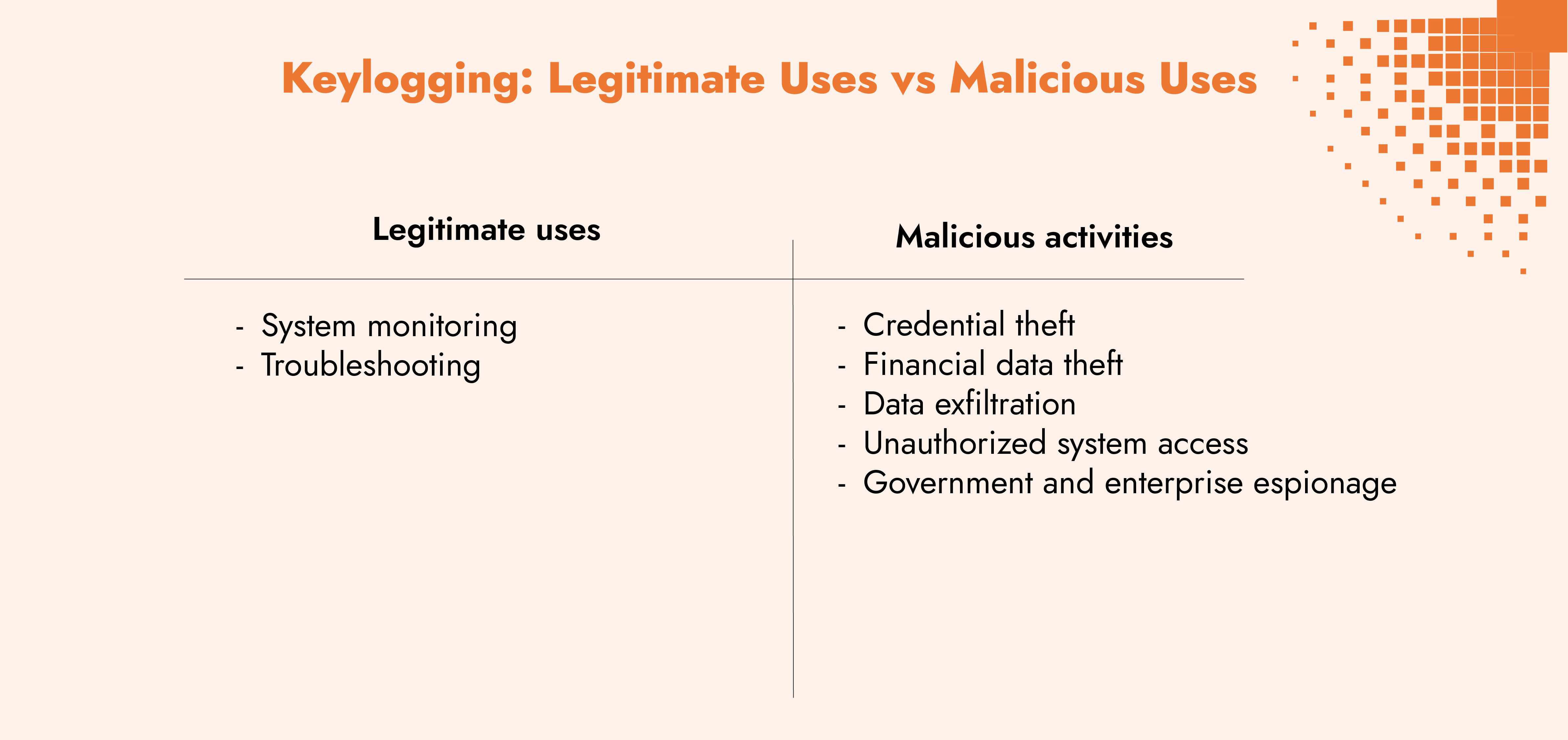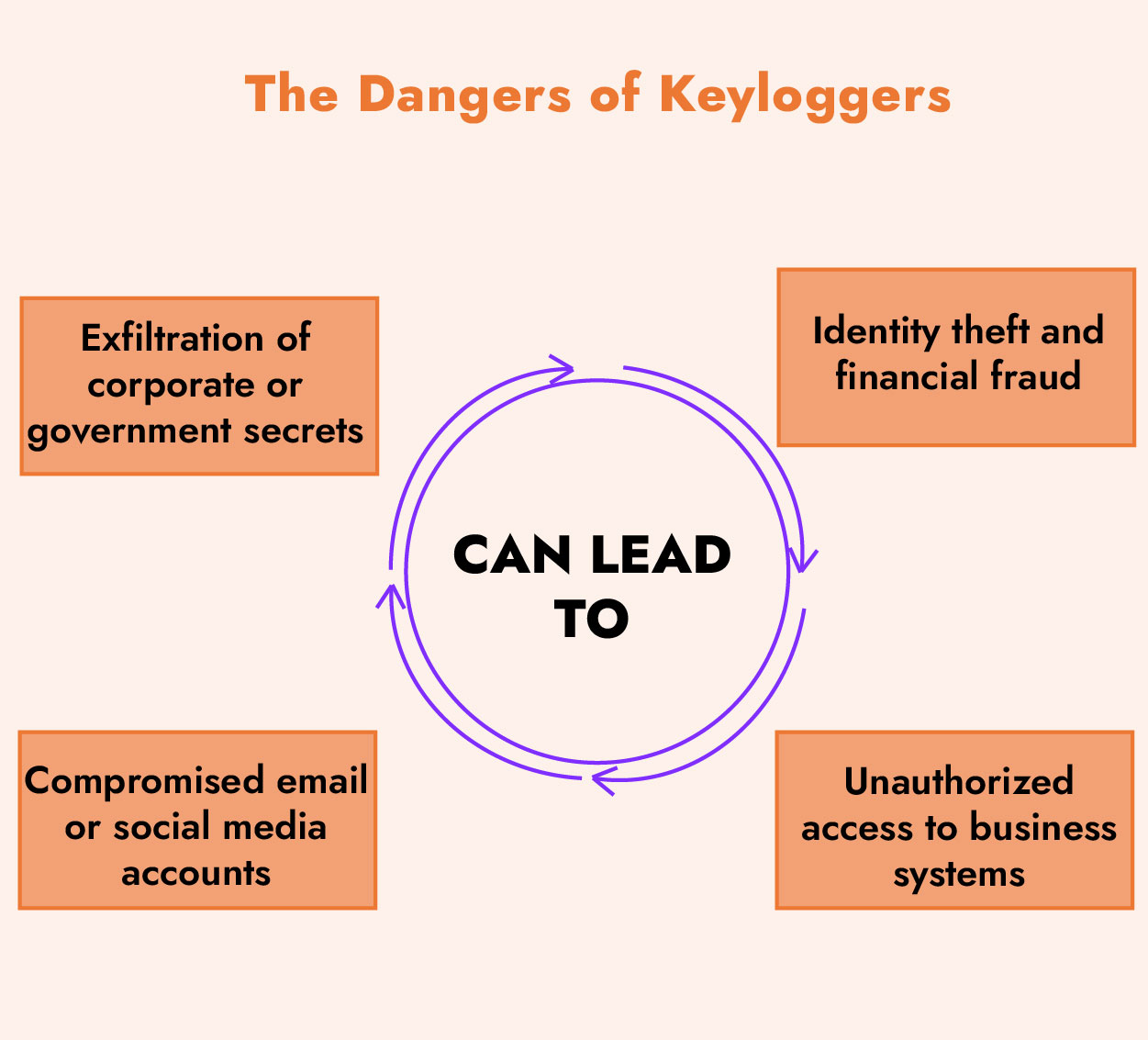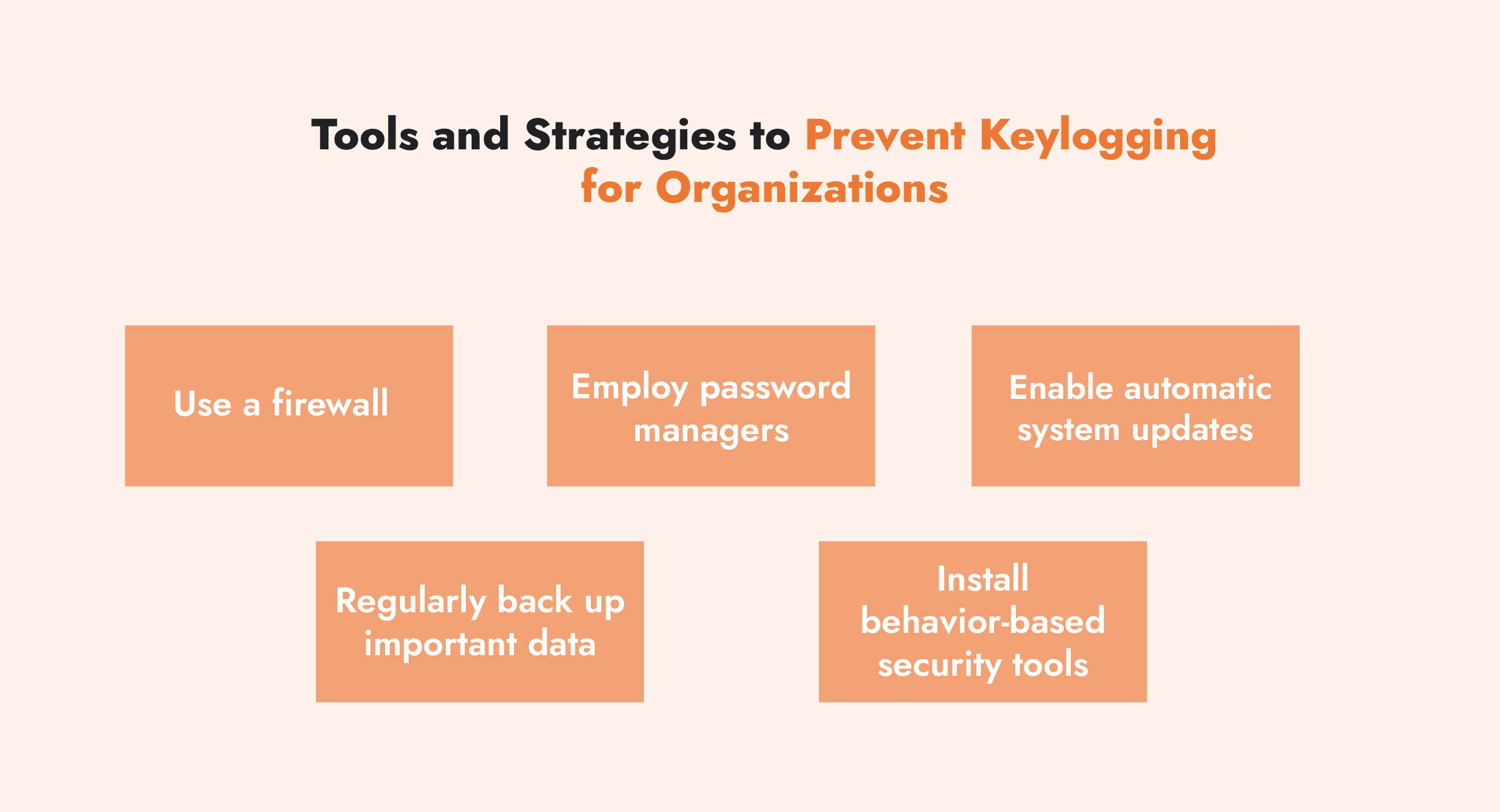Keylogging and Keyloggers
Keyloggers, short for keystroke loggers, are software or hardware tools designed to record everything a person types on a device. They can have legitimate uses—such as system monitoring or troubleshooting—but they are more often associated with malicious activity.
In a keylogger attack, the software quietly captures every keystroke entered on a computer or mobile device and sends this data to the attacker. Once installed, keyloggers can steal login credentials, payment card numbers, and other sensitive information without the victim ever realizing it.
In mid-November 2024, the New Jersey Cybersecurity & Communications Integration Cell (NJCCIC) issued a Red Alert after uncovering an active keylogging campaign targeting state and municipal agencies. The threat actors leveraged stealthy software to harvest usernames, passwords, and system credentials—providing them persistent access to critical networks. The attack underscores how quietly pervasive and damaging keyloggers can become in government and enterprise environments.

Definition of Keylogger
A keylogger is a surveillance tool that records and monitors the input made through a keyboard. Because the keyboard is the primary way users interact with systems, keyloggers can collect vast amounts of private data without your knowledge.
While generally illegal, there are legal uses for keylogging software, including:
- Parental monitoring: Parents may use it to supervise children’s online activities.
- Employee productivity tracking: Businesses may use it (with consent and within the law) to ensure compliance with corporate policies.
- IT diagnostics: Security teams can deploy keyloggers temporarily to reproduce or debug system errors.
However, malicious keyloggers are among the most dangerous forms of spyware because they operate invisibly and provide cybercriminals with direct access to user credentials.
Information Captured by Keyloggers
Keyloggers can collect:
- Text typed on the keyboard
- Login credentials and passwords
- Financial data, such as credit card numbers
- Private messages, emails, and chat logs
- System and browser data (URLs visited, timestamps)
Some advanced keyloggers also take screenshots or record audio and video, expanding their surveillance beyond keystrokes. Attackers can use pattern recognition, such as detecting @ symbols or .com endings, to identify and extract specific sensitive data efficiently.
The Dangers of Keyloggers
Unlike ransomware or trojans, keyloggers do not necessarily damage your device or encrypt files. Their danger lies in how long it can take to detect them in a system. This can lead to:
- Identity theft and financial fraud
- Unauthorized access to business systems
- Compromised email or social media accounts
- Exfiltration of corporate or government secrets
Keyloggers are also instrumental in business email compromise and credential-stuffing attacks. With stolen passwords, cybercriminals can impersonate legitimate users and gain deeper access to networks, which can go undetected for a long time.

Types of Keyloggers and How They Work
Hardware Keyloggers
Hardware keyloggers are physical devices inserted between the keyboard and computer port. They capture keystrokes directly from the keyboard signal. Although less common due to physical access requirements, they can be disguised within USB cables, keyboards, or adapters.
Remote Keyloggers
Today, remote keyloggers are far more prevalent and come in many forms, such as:
- Form-grabbing keyloggers: Capture data entered into web forms before encryption.
- JavaScript keyloggers: Embedded in websites to capture browser input.
- Kernel-level keyloggers: Run deep within the OS to avoid detection by antivirus tools.
Infection Vectors
Remote keyloggers typically spread through:
- Malicious emails with infected attachments or links
- Malicious websites hosting drive-by downloads
- Trojanized software installers or cracked applications
- Social engineering tactics posing as legitimate actions for the user to take
Protecting Yourself from Keyloggers
According to the SOC Radar, 66% of CISOs in the US identified human error as the biggest risk. The best defense against keyloggers is cyber awareness, supported by strong digital hygiene.
Best Practices for Personal Devices
- Be cautious with email attachments verify the sender before opening files.
- Avoid suspicious websites and check for HTTPS certificates before entering data.
- Use strong, unique passwords for every account.
- Enable multi-factor authentication (MFA) to protect against credential theft.
- Keep software and operating systems up to date to close known vulnerabilities.
Public Device and Open Network Safety
Public devices and open networks remain viable attack surfaces, even if dedicated public computer kiosks are less common than they once were. Threat actors can install software keyloggers on shared computers, or use evil-twin or fraudulent Wi-Fi. They can also physically tamper with keypad overlays or even an ATM. This can result in exposed personal data and financial data. Public networks, such as those in hotels or libraries, may already be compromised. Instead of using an open Wi-Fi network, you can use a mobile hotspot or a connect to a trusted VPN to secure your data.
Defending Against Remote Keyloggers
Use endpoint protection platforms (EPPs) and anti-spyware tools that scan for hidden processes. Regularly check for unusual CPU usage, input lag, or browser slowdowns, which can all be signs of an attack.
Detecting and Removing Keyloggers
Signs of a Keylogger Infection
- Noticeable lag when typing or moving the mouse
- Frequent system crashes or unresponsive programs
- Unrecognized background processes or network connections
Detect and Prevent Keyloggers for Individuals
Most keyloggers are found by on-device antivirus/anti-malware — but only if that software is active and kept up to date. Beyond that, simple attentiveness does most of the work: watch for slow or stuttering typing, unexpected popups or new browser toolbars/extensions, or programs you don’t remember installing — treat those as red flags. If you notice anything odd, disconnect from the network, run a full scan with your security tool, and change important passwords from a different, trusted device. Use a company-approved password manager so you rarely type passwords, and enable multi-factor authentication (MFA) wherever possible. Finally, report suspicious activity immediately — fast reporting lets IT contain an issue before it spreads.
Tools and Strategies to Prevent Keylogging for Organizations
Individual habits matter, but organizations must implement the right controls and train the workforce to be able to recognize these threats. Some steps that produce measurable results include:
- Use a firewall to monitor outbound connections and block suspicious traffic
- Employ password managers for complex, unique credentials
- Enable automatic system updates to patch vulnerabilities
- Regularly back up important data to external or cloud storage
- Install behavior-based security tools that detect anomalies in real time


Need help strengthening your cybersecurity posture?
Discover how C-Risk can help you assess, manage, and mitigate risks from threats like keyloggers, spyware, and other forms of malware through robust security frameworks and expert guidance.
Mitigate risk and educate your workforce
Keyloggers are a persistent threat to organizations. They try to exploit our daily digital activities at work and on our personal devices. Because human error can lead to a keylogger attack, emphasizing cyber awareness and zero trust practices with employees at any level is one of the best security controls with a return on risk.
Conclusion
Keyloggers may operate quietly, but their impact can be devastating. By recording every keystroke, they expose individuals and organizations to data theft, financial loss, and long-term reputational damage. Detecting them early — and preventing them through strong digital hygiene, up-to-date security tools, and user awareness — is essential to maintaining system integrity. In cybersecurity, vigilance and education are your strongest defenses.
FAQ
What is a keylogger and why should I care?
A keylogger is software or hardware that records input from a device, usually keystrokes, and sometimes form fields or screens, and sends that data to an attacker. They can be simple hardware plugs or stealthy memory-injecting or kernel-level software. Because keyloggers capture credentials and sensitive data, a single unnoticed infection can lead to account takeover, fraud, or deeper network intrusion.
How can I tell if a device has a keylogger, and what should I do right away?
Look for simple, visible signs: typing that stutters or lags, new or unexpected browser toolbars/extensions, strange popups, programs you don’t remember installing, or apps making network connections when idle. If you spot any of these, immediately disconnect the device from the network, run a full antivirus/anti-malware scan (or boot to safe mode/offline tools), and change sensitive passwords from a different, trusted device. Report the incident to IT/security so they can contain, investigate, and advise on next steps, especially if the device holds work credentials or access to corporate systems.
Will multi-factor authentication (MFA) and password managers stop keyloggers?
They don’t stop keyloggers from capturing keystrokes, but they substantially reduce the value of stolen credentials. A password manager means users don’t type credentials as often, so there is less exposure. MFA makes captured passwords far less useful to attackers. Combined with basic hygiene, updated endpoint protection, avoiding public/shared machines for sensitive work, and fast reporting, these controls materially reduce the risk of account takeover following a keylogger exposure.

We build scalable solutions to quantify cyber risk in financial terms so organizations can make informed decisions to improve governance and resilience.







